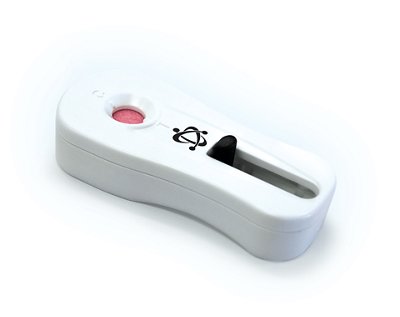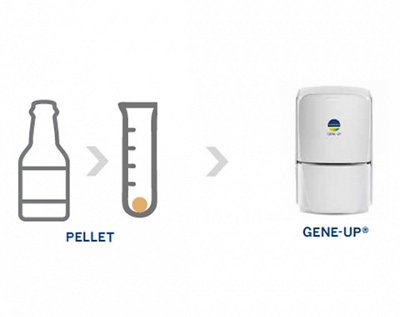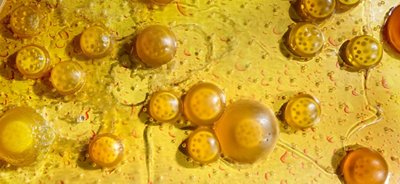Part 5 - Beer Spoilage Detection
What Technological Choices?
November 18, 2020

MY NEEDS CONCERNING A BEER SPOILER DETECTION SET-UP ARE IDENTIFIED. WHAT TECHNOLOGICAL CHOICES DO I HAVE FOR MY LABORATORY?
To implement an effective microbiological contamination control entity into a laboratory, the above requirements of desired time to results, test specificity and sensitivity need to be taken into consideration. These are the so called “goals” for the spoiler detection capability in your current/future laboratory.
In addition, there is the budget and the current “skill set” of the personnel to run the laboratory that also play an important part in the choice of technology for equipping your laboratory.
Currently, the choice breaks down essentially into one of 2 technologies:
- Traditional culture based microbiology
- Rapid microbiology based on molecular biology (PCR)
Often, the quickest and easiest way to start a brewery microbiology laboratory is to monitor for Lactic Acid Bacteria (Lactobacillus and Pediococcus) – the two most common brewery spoilage micro-organisms. Lately, the issue of Saccharomyces var Diastaticus is also of interest to brewers as it can cause over-attenuation and gushing of kegs, bottles and cans.
Detecting micro-organisms can be done in different ways:
TRADITIONAL MICROBIOLOGY
As the name suggests, this fundamental technique is based on the capacity of the microorganisms to grow which often varies from 2-4 days for bacteria and 5-10 days for yeasts. In the day-to-day decision making of an active brewery, this can be too long and mean receiving the results after the decision deadline (e.g. re-pitch or not a yeast / package into bottles/cans or kegs from the bright tank / ship out to distributors).
To be performed correctly, this requires that the technician has been appropriately trained in basic microbiology methods:
- Reconstitution of culture media /aseptic plating techniques / quality control strain propagation / Staining techniques (e.g. gram staining) and Identification techniques (e.g. API strip).
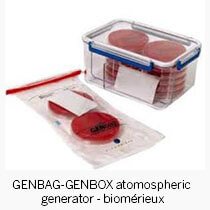
Regardless of the traditional microbiology technique, some basic materials are required
- Bunsen burner / propane burner
- Incubator (capable of 25-30°C)
- (CO2 generator for anaerobic incubation)
Spread Plate method:
Sterile culture media plate/tube + sterile solid media
Sterile graduated 1ml pipette + L-shaped glass rod or Microbiological loop
Membrane Filtration method:
Manifold (including filtration cups)
Vacuum pump
Membrane filter (0.45µm pore size)
Other methods:
There are other methods that rely on the colour of the media or broth changing colour. Although simple to set up at a minimum cost, these methods lack both sensitivity and specificity which might mean detecting a “contamination” which in fact is not a beer spoiler and possibly ending unnecessarily in the rejection/destruction or missing altogether the presence of a potential beer spoiler. Finally they are not able to quantify the micro-organisms that might be present which can be helpful when trying to estimate the risk in order to make the right decision.
PCR ANALYSIS
PCR Analysis (Polymerase Chain Reaction) is a modern technique that identifies a specific segment of the target micro-organism’s DNA and then amplifies this DNA trace in order to detect its presence (no need to wait for it to grow to be able to identify it!).
Over the past 5 years, this technique has been simplified to such a degree that it is now regularly employed in brewery laboratories without requiring specialist microbiological training or the sterile room conditions that were previously necessary to avoid cross contamination (although good aseptic handling protocols should be used and if available a laminar flow cabinet). The good news is that PCR gives a result within hours, is very specific and sensitive and generally depending on the system, very little operator hands on time.
Equipment needs:
- Centrifuge
- Thermocycler
- Pipettes
VERIFLOW® PCR spoilage detection
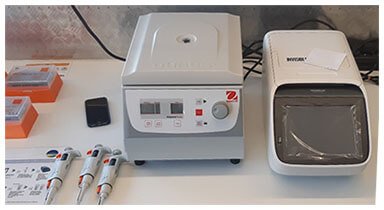
A PCR SOLUTION OR TRADITIONAL CULTURE SOLUTION?
It all depends on what your objectives are. Traditional culture methods which rely on the bacteria/yeast to multiply sufficiently to be visually detectable have until recently been the mainstay of the brewery laboratories and many (but by no means all) remain a reference technique. By their very nature it takes 2-4 days to detect bacteria and 5-10 days for yeasts and often despite claims of specificity, the differentiation of beer spoiler bacteria from non-spoilers is not easy which means additional tests are needed performing to identify the spoilers and secondly they can actually miss the beer spoilers which can be in a dormant state (“stressed” state due to exposure to alcohol, low pH and hop resins – Viable but Non-Culturable VNC) and therefore they do not grow in the normal allotted time.
As mentioned, the available agars used although selective [experience has shown that exclusive selectivity is generally not the reality] for spoilage organisms, they do not really mirror your beer (e.g. it does not contain alcohol) and is questionable regarding to what is truly going on in the tank.
It is important to ensure the correct level of microbiology training of the laboratory team to ensure an optimal proficiency and capacity to understand and interpret the results correctly. That said, when in experienced hands, traditional culturing can be a valuable tool for the brewer, giving a broad on-site picture of what is going on as part of an on-going risk based quality management system. The initial capital investment is also modest.
So what advantages can PCR [Polymerase Chain Reaction] technology bring which is detecting specific sections of DNA it has been designed to detect?
Well first of all its much quicker (hours compared to days), with a lower detection threshold meaning you can identify the beer spoiler presence long before the quality has been impacted. it picks up bacteria and yeasts that can be in a dormant state (the so called Viable but Non Culturable -VNC) which the traditional methods will miss. Finally due to its specificity, it will only detect those organisms of interest i.e. the beer spoilers.
A real production orientated detection tool if deployed at the on-site brewery laboratory to enable a quick validation during the brewing process and a rapid release of the final product. There is always a “but”, in this case it is the capital investment which is more consequential but not as painful as you might think.
In an ideal world, to run traditional microbiology alongside rapid microbiology is the ideal which will give you both a good overall visibility on what microbes are circulating in your brewery as well as the quick “production” orientated answers required for an efficient and prospering brewery who aims to produce consistently good quality beer.
That said, the trend in the breweries is to opt to replace culture altogether.
KEY POINTS
• Outline what your quality control plan objectives before choosing the right technology for your brewery laboratory
• Ensure that your objectives are aligned with the entire brewery team.
• Internalising “beer spoiler” detection is the future for Quality Control and essentially a choice between (1) traditional culture based technology (2) Rapid microbiology methods such as PCR
• Modern craft breweries with a proactive approach to quality control are tending to opt for PCR technology due to its same day results, specificity with regards to the detection and identification of recognised “beer spoilers” and simplicity of the systems that are nowadays available on the market.
| PROS | CONS | |
| Traditional Microbiology MRS - WLD Broth | Cost Simplicity Manipulation Accessibility | Time Selectivity VNC (false -) Microbiology lab environment |
| Molecular Biology RT-PCR PCR end point | Sensivity Selectivity Rapid Multiple parameters | Microbiology lab environment Reading (RT-PCR) Dead DNA Cost |
RELATED PRODUCTS
